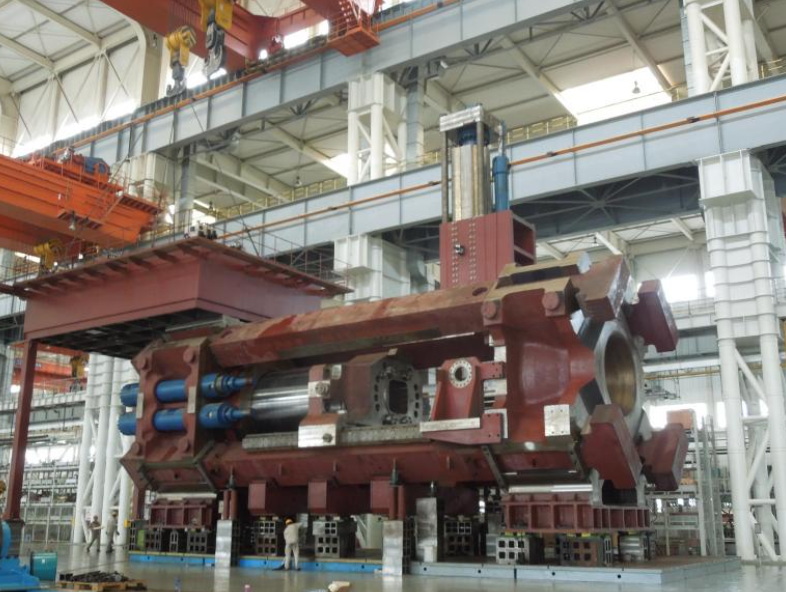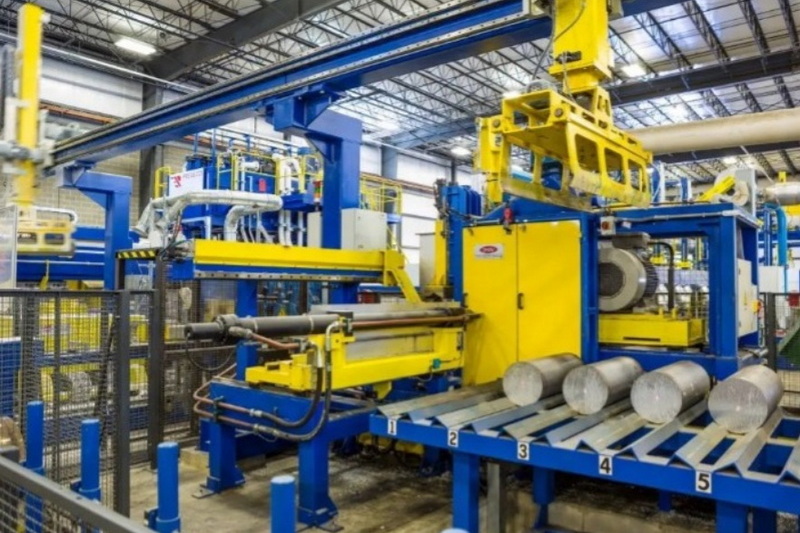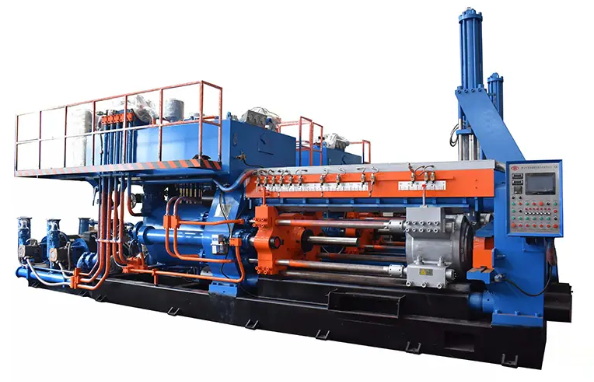Content Menu
● Understanding Aluminum Extrusion
● Large Aluminum Extrusion Presses
>> Advantages of Large Presses
>> Applications
● Smaller Aluminum Extrusion Presses
>> Advantages of Smaller Presses
>> Applications
● Key Comparisons Between Large and Small Aluminum Extrusion Presses
● Factors Influencing the Choice of Press Size
● Technological Advances in Aluminum Extrusion
● Conclusion
● FAQ
>> 1. What is the maximum size that can be extruded using large aluminum extrusion presses?
>> 2. Are large aluminum extrusion presses more energy-efficient than smaller ones?
>> 3. Can small aluminum extrusion presses produce complex shapes?
>> 4. What industries primarily use large aluminum extrusions?
>> 5. How does the cost compare between using large versus small aluminum extrusion presses?
Aluminum extrusion is a critical manufacturing process that shapes aluminum alloys into specific profiles by forcing them through a die. The size of the extrusion press plays a significant role in determining the capabilities and efficiency of this process. This article will explore the differences between large aluminum extrusion presses and smaller models, examining their applications, advantages, and limitations.

Understanding Aluminum Extrusion
Aluminum extrusion involves several key steps:
1. Billet Preparation: A solid cylindrical length of aluminum alloy, known as a billet, is preheated to make it malleable.
2. Extrusion Process: The heated billet is placed into the extrusion press, where it is forced through a die under high pressure.
3. Cooling and Finishing: After exiting the die, the extruded profile is cooled (quenched) and cut to length.
This process allows manufacturers to create complex shapes with high precision, making aluminum extrusion essential in various industries, including construction, automotive, and aerospace.
Large Aluminum Extrusion Presses
Large aluminum extrusion presses are designed to handle significant amounts of material and produce larger profiles. They can exert pressures exceeding 15,000 tons, allowing for the extrusion of heavy-duty components with intricate designs.
Advantages of Large Presses
- Higher Production Capacity: Large presses can produce larger quantities of extrusions in a shorter time frame, making them ideal for high-demand applications.
- Complex Profiles: They can create more complex shapes that would be difficult or impossible to achieve with smaller presses.
- Cost Efficiency: Producing larger profiles reduces assembly time and costs by minimizing the number of components needed for construction.
- Material Utilization: Larger presses often lead to better material utilization rates due to their ability to handle larger billets and produce longer extrusions without waste.
Applications
Large aluminum extrusions are commonly used in:
- Construction: Structural components such as beams, columns, and trusses are often produced using large presses. These components must meet rigorous safety standards and structural integrity requirements.
- Transportation: Industries like automotive and aerospace utilize large extrusions for frames and body parts that require strength while maintaining a lightweight profile.
- Industrial Machinery: Heavy machinery often requires robust aluminum frames that can withstand significant stress while remaining lightweight for operational efficiency.
- Marine Applications: Large extrusions are also prevalent in marine applications where strength and corrosion resistance are critical.

Smaller Aluminum Extrusion Presses
Smaller aluminum extrusion presses typically exert less pressure and are suited for producing smaller profiles or specialized components. They often have lower production capacities compared to their larger counterparts.
Advantages of Smaller Presses
- Flexibility: Smaller presses can be more versatile for custom jobs or small production runs. They allow manufacturers to quickly adapt to changing market demands or customer specifications.
- Lower Initial Investment: They require less capital investment, making them accessible for smaller manufacturers or niche markets. This lowers the barrier to entry for companies looking to enter the aluminum extrusion industry.
- Less Energy Consumption: Smaller presses generally consume less energy during operation, which can lead to lower operational costs over time.
- Easier Maintenance: Smaller machines tend to be simpler in design, making maintenance easier and less costly.
Applications
Smaller aluminum extrusions are often used in:
- Consumer Products: Items such as furniture frames, window frames, and decorative elements often utilize smaller extrusions due to their intricate designs.
- Electronics: Heat sinks for electronic devices require precise dimensions that smaller presses can provide efficiently.
- Specialized Industrial Components: Many industries require unique parts that do not fit standard sizes; smaller presses excel in producing these custom components.
- Signage and Displays: Retail environments frequently use smaller extrusions for signage frames and display cases.
Key Comparisons Between Large and Small Aluminum Extrusion Presses
| Feature | Large Aluminum Extrusion Presses | Smaller Aluminum Extrusion Presses |
| Pressure Capacity | Up to 15,000 tons | Typically under 3,000 tons |
| Production Volume | High | Moderate to low |
| Profile Complexity | High | Moderate |
| Initial Investment Cost | High | Lower |
| Energy Consumption | Higher | Lower |
| Flexibility | Limited | High |
| Material Waste | Typically lower | Can be higher due to shorter runs |
Factors Influencing the Choice of Press Size
When deciding between large and small aluminum extrusion presses, several factors come into play:
1. Production Volume Needs: If a manufacturer anticipates high demand for specific products, investing in a large press may be justified. Conversely, if demand is sporadic or low-volume custom work is needed, a smaller press may be more suitable.
2. Complexity of Designs: For projects requiring intricate designs or multiple profiles from a single run, large presses may offer advantages in terms of capability and efficiency.
3. Budget Constraints: Initial investment costs can vary significantly between large and small presses. Companies must assess their financial capacity when making this decision.
4. Space Availability: Large presses require more floor space and infrastructure support (like heavy-duty foundations), which may not be feasible for all manufacturers.
5. Future Growth Potential: Businesses should consider their long-term growth plans. Investing in a large press may offer flexibility for future expansion into new markets or product lines.
Technological Advances in Aluminum Extrusion
The aluminum extrusion industry has seen significant technological advancements over recent years that have improved both large and small press capabilities:
- Automation and Robotics: Many modern extrusion facilities incorporate automation technologies that enhance precision and reduce labor costs. Robotic systems can handle loading/unloading processes more efficiently than manual labor.
- Improved Die Design: Advances in die technology allow for better flow characteristics during the extrusion process, resulting in improved surface finishes and reduced defects.
- Real-time Monitoring Systems: Implementing sensors within the press allows manufacturers to monitor temperature, pressure, and material flow continuously. This data helps optimize production processes and minimize waste.
- Sustainable Practices: The industry is increasingly focusing on sustainability by utilizing recycled aluminum materials and reducing energy consumption during production processes.
Conclusion
In summary, both large and small aluminum extrusion presses have their unique advantages and applications. Large presses excel in high-volume production and complex profile creation while offering cost efficiencies for mass production needs. On the other hand, smaller presses provide flexibility for custom jobs with lower initial investments but may not be suitable for high-volume demands due to their limited capacity.
Ultimately, the choice between large and small aluminum extrusion presses depends on several factors including production volume needs, complexity of designs required, budget constraints, available space, and future growth potential. As technology continues to advance within the industry, manufacturers will find new ways to optimize their operations regardless of press size.

FAQ
1. What is the maximum size that can be extruded using large aluminum extrusion presses?
The maximum size depends on the press capacity but can handle profiles with dimensions up to 31 inches in diameter or larger.
2. Are large aluminum extrusion presses more energy-efficient than smaller ones?
Generally, smaller presses consume less energy due to their lower operational demands; however, large presses may be more efficient for high-volume production due to economies of scale.
3. Can small aluminum extrusion presses produce complex shapes?
Yes, but they may have limitations compared to large presses in terms of size and complexity of the profiles produced.
4. What industries primarily use large aluminum extrusions?
Industries such as construction, transportation, aerospace, and industrial manufacturing heavily utilize large aluminum extrusions due to their strength and versatility.
5. How does the cost compare between using large versus small aluminum extrusion presses?
Large presses generally involve higher initial costs but can be more cost-effective for mass production due to reduced assembly needs; small presses are more affordable but may not be suitable for high-volume demands.






















